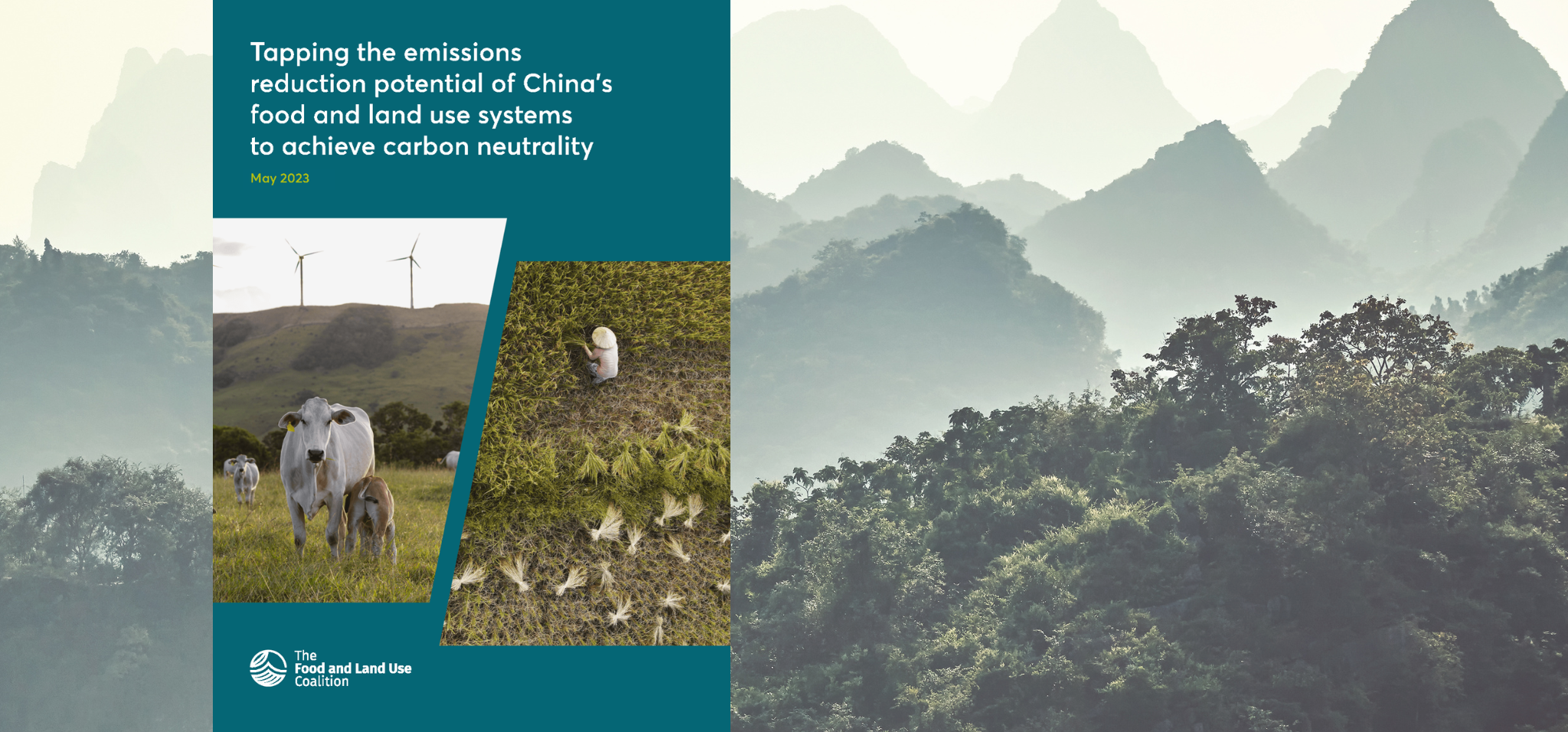
China’s current long-term decarbonization pathways towards its 2060 carbon neutrality target primarily focus on energy and energy-related sectors. The climate mitigation potential in food and land use systems is largely overlooked owing to a dearth of scientific evidence and lack of a holistic policy framework. Based on a review of the literature and databases, this report shows that between 2005 and 2015, on-farm agricultural production was by far the largest source of emissions from China’s food and land use systems (44%), followed by post-production and consumption (31%).
The report identifies supply- and demand-oriented mitigation measures and associated co-benefits in China's food and land use systems, and also explores China’s food and land use policy landscape to identify several institutional and policy barriers to carbon neutrality. China needs to develop coherent policies that will address food and land use emissions in a holistic manner while taking into consideration food security, health, environment protection, biodiversity, and climate targets. Actions towards these targets in turn will contribute to greater climate resilience, improved local livelihoods and human health, and long-term economic prosperity. To assist and facilitate China’s transition from its current sector-focused approach to a holistic, systems approach, we propose actions for policymakers, researchers, and NGOs.
The paper draws from secondary data, the literature and workshops with the Food and Land Use Coalition‘s (FOLU) China network of academics and civil society working in food and land use systems during the course of the research period (between 2020 and 2021). The paper first explores the role for China’s food and land use systems in achieving its carbon neutrality ambition, including GHG accounting and mitigation options. It then goes on to explore China’s food and land use policy landscape in relation to its carbon neutrality ambition. Based on the analysis and the feedback provided by workshop participants, the paper ends with specific actions for various stakeholders, including policymakers, researchers, and NGOs.